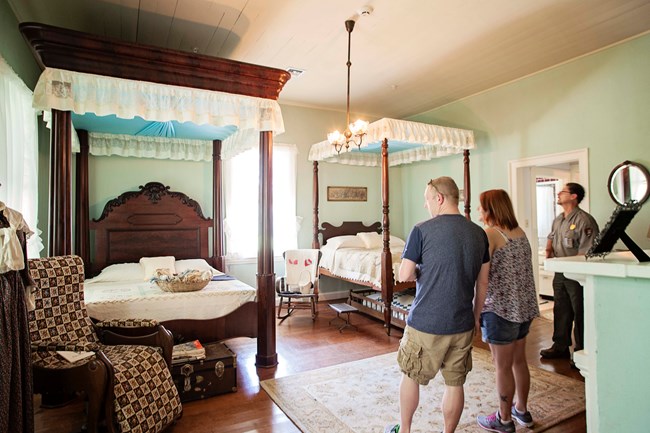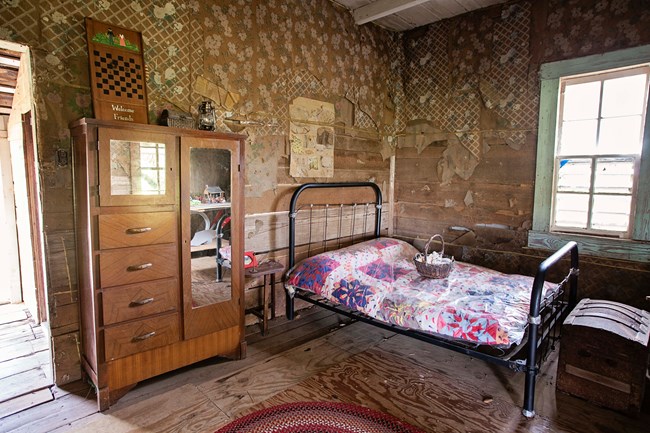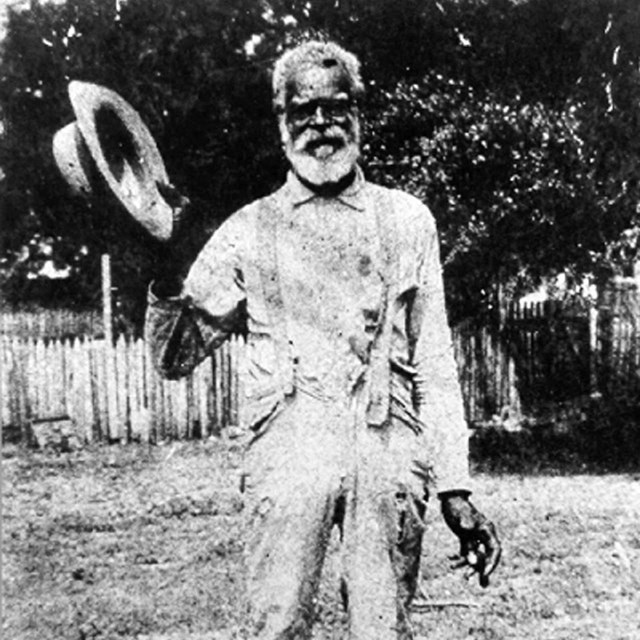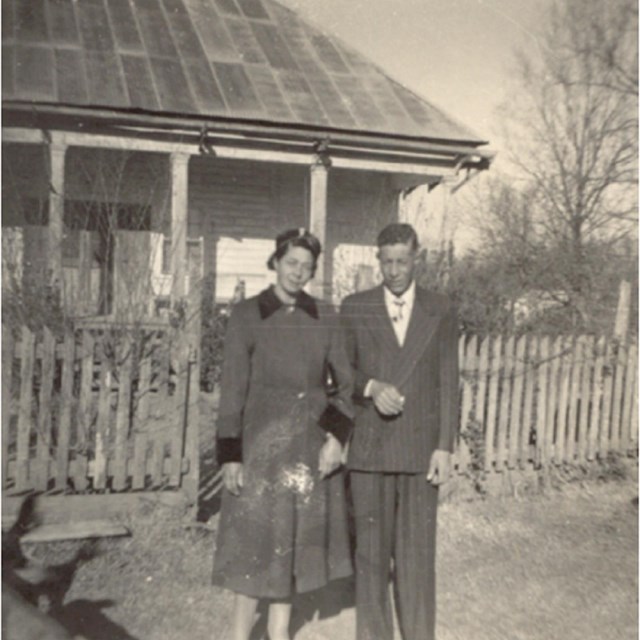
NPS Photo: A. Jones Oakland Plantation was founded on a 1785 Spanish-era land grant by Jean Pierre Emanuel Prud’homme and his wife Catherine Lambre. A small enslaved work force grew tobacco and indigo. From domestic and agricultural workers to craftsmen such as blacksmiths, carpenters and masons, the skills and strengths of enslaved Africans were vital to the survival of the plantation. The proficiency of enslaved blacksmiths including Philippe and Solomon Williams, for example, can be seen in iron latches and hinges, in numerous iron cross grave markers, and in a collection of skillfully made well-drilling tools found on Oakland Plantation. 
NPS Photo: A. Jones After the Civil War and into the 1900s, life continued to revolve around cotton. Descendants of the enslaved remained as sharecroppers, tenant farmers, and day laborers and new families moved here for work to support their families. The legacy of these families, including Helaire, Metoyer, Williams, Toussaint, Shields, and others remains as many of their descendants continue to reside nearby. The plantation survived the Civil War, Reconstruction, boll weevils, and the Great Depression. Increasingly machines replaced the need for draft animals and farm workers; what began in the 1930s accelerated after World War II bringing the end of the plantation era. The last tenant family moved off the plantation in the early 1960s.
|
Last updated: March 26, 2025


